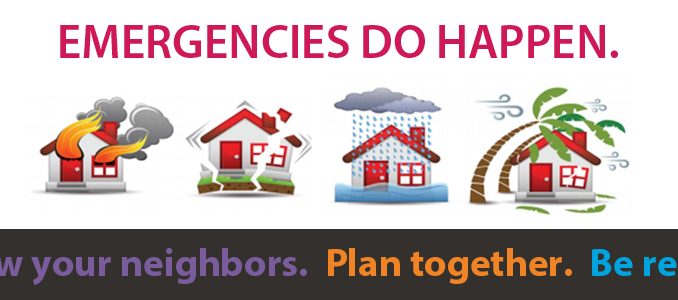
Table of Contents
Introduction:
- Disaster preparedness and response planning generally refers to the preparedness, preparation and planning for the time of disasters and emergencies.
- It is a course of action developed to mitigate the damage of the effects of potential disaster.
- Here, various preventive measures/actions are taken to decrease the severity of the disaster.
- Disaster preparedness plan is mostly 80% generic, 15% specific and 5% unique.
Steps in Disaster Preparedness and Response Planning:
1. Risk assessment:
- The initial step of disaster preparedness and response planning is to assess the risk.
- All the assessment regarding the hazard and vulnerabilities will be done in this stage.
- All the baseline information will be collected.
- The past incidence and results of the disaster are reviewed.
2. Developing the workforce:
- Once the assessment is done, workforce is prepared.
- The required workforce are recruited.
- Capacity building of the workforce is done through training and workshops.
- Roles and responsibilities of the people and institutions are made clear.
3. Make critical position available:
- All the available places are identified.
- The local people need to be made aware about the safe places.
- The places where camps will be conducted, needs to be made known to general public.
4. Update and alert:
- Updates and alertness are necessary.
- Alertness can be provided prior to the unset of the disaster and emergency.
- Timely alert helps in evacuation, reducing the loss of life.
- Updating the preparedness plan needs to be done time and again.
- Early warning system should also be updated and upgraded.
5. Test the plan:
- It is very necessary to test the plan.
- It helps in identifying loop holes in the plans.
- Drills can be conducted in the community by the help of the community and other enterprises.
Importance/Advantages of Disaster Preparedness and Response Planning:
- Reduces the loss of life and property
- Quick action or response prevents further damage
- Effective disaster preparedness helps alleviate some of the chaos and act sensitively.
- Fastens the rehabilitation phase.
- Helps further in tackling other emergency like outbreaks, social conflicts, etc.
- Planned and coordinated support from all the alliances.
Example of Poor Response to Disaster:
Haiti is known for the corrupted government. When the earthquake of 7.0 hit the island nation in January of 2010, the government and its people were ill prepared. Between 92,000 and 300,000 people died with many more trapped under ruble. Lacking supplies and leadership, the Haiti government did very little to pull survivors from destroyed buildings. Instead, the Haitian people had to do most of the initial rescue efforts themselves. Even the government was unable to properly distribute the aids received. The efforts of government on providing safe drinking water, reconstruction were very less. Even after the years s of earthquake there was no proper concern from the side of the government. The earthquake further pushed the already poor Haiti people much below the poverty line.
Example of Good Response To Disaster:
- Whenever there is the talk regarding disaster preparedness it’s the name of JAPAN that pops in mind.
- Japan has one of the most advanced early warning system
- The tsunami warning set up in japan has many sensors. The network is designed to predict the height, speed, and location and arrival time of any tsunami heading for the Japanese coast.
- Japan is the most ready country
- All the buildings build in the country are based on country’s revised plan which were time and again.
- The buildings so shake at the time of earthquake but they rarely turn into the rubble.
- However still there are lots of casualties in Japan due to disasters; the loss would have been much higher if they were not prepared as such.
A stitch in time saves nine
References and For More Information:
https://www.ready.gov/business/implementation/emergency
https://searchdisasterrecovery.techtarget.com/definition/emergency-management-plan
http://www.crschools.net/blog/top-5-worst-government-responses-to-natural-disasters/
http://content.time.com/time/world/article/0,8599,2058390,00.html
https://www.preventionweb.net/files/30837_308371internationalconferencebackgr.pdf
http://www.who.int/hac/techguidance/tools/WHO_strategy_consecpts_in_emegency_management.pdf
https://www.preventionweb.net/files/26081_kp1concepdisasterrisk1.pdf